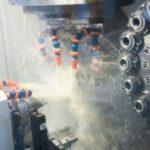Patents
The United States government grants exclusive rights to individuals who have created an invention. These exclusive rights are called patents and are granted for a fixed term. During this time, the patent owner may prevent others from making, using, selling, or offering to sell the patented invention. These rights extend to the importation of the patented invention as well. After the patent term lapses, the public may make, use, sell, import, etc. the invention without permission from the patent owner.
The only entity in the United States which can confer patent rights is the United States Patent & Trademark Office (USPTO), which is a federal agency under the jurisdiction of the Department of Commerce. No state or other public or private entity can confer patent rights.
The United States is now a first-to-file patent system, which generally (but not always) means that the first applicant to file a patent application for a particular invention is deemed to have superior patent rights over a subsequent applicant for the same invention. However, there are some caveats to the first-to-file system relating to previous public disclosures of an invention that could ultimately determine which applicant has superior rights.
Patent rights are obtained by submitting a patent application to the USPTO. The USPTO’s job is to examine patent applications to ensure the applications meet the standards for patentability; namely that the invention has been described with sufficient specificity, the invention is useful, and the invention is novel and unobvious compared with anything that predates the filing of the patent application. The examination process can be long; several years in fact depending on the type of invention/technology and the current backlog of other applications waiting for examination at the USPTO. Generally, the examination process involves the interaction between the applicant and USPTO to negotiate the terms under which a patent will be granted for a particular invention. This process is called patent prosecution. Not all patent applications that are filed become patented. Additionally, an applicant can request that his/her patent application be kept confidential while it undergoes examination. Otherwise, absent such a request, patent applications are typically published (irrespective of whether they ultimately become issued patents) approximately 18 months after filing the application. This publication date may occur sooner in certain circumstances. Even if a patent is issued, its validity may be challenged by another party through the USPTO and/or a court.
There are three general types of patents:
- Design Patents – these patents protect the ornamental features of an article of manufacture and have a patent term of 15 years calculated from the date the design patent issues.
- Plant Patents – these patents protect asexually reproduced new and distinct varieties of plants and have a patent term of 20 years calculated from the filing date of the plant patent application.
- Utility Patents – these patents protect processes, machines, articles of manufacture, or compositions of matter, or any improvements thereof and have a patent term of 20 years calculated from the filing date of the utility patent application.
Each country has its own patent laws and patent offices, some of which differ from the U.S. patent rules and procedures. There is no single global patent that will provide protection throughout the world. However, an international patent application can be filed under the Patent Cooperation Treaty (PCT), which allows an applicant to defer the decision and cost of filing in individual foreign countries for a few years. Ultimately, a separate patent application must be filed in each country/jurisdiction where protection is sought.
Rahman LLC’s registered patent attorneys have decades of experience reviewing technical disclosures from inventors and discussing patentability strategies, preparing patent applications, and prosecuting the applications before the USPTO as well as foreign patent offices. The firm’s attorneys have broad-based technical proficiencies in biochemistry, computer science, electrical engineering, and mechanical engineering to provide full support for all technologies. The firm also includes former USPTO Examiners and/or in-house corporate attorneys.
Patent services:
- Audits
- Opinions: prior art, invalidity, infringement
- Claim charting: invalidity, infringement
- Preparation of patent applications: design, plant, utility (including provisional applications)
- Prosecution (including in-person Examiner interviews and appeals)
- Foreign filings and prosecution (Paris Convention and PCT filings)
- Post issue maintenance
- Reexaminations
- Reissues
- Litigation



